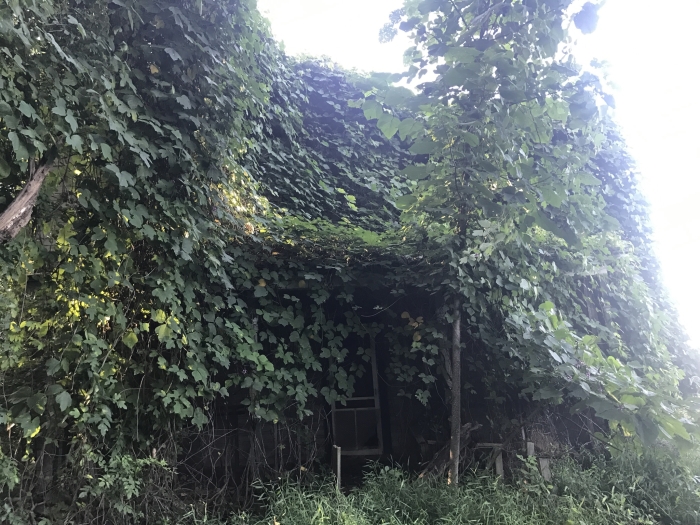Kudzu
(Pueraria montana)
Kudzu (Pueraria montana)
/
/

Michael Ellis
CC BY 4.0
Image By:
Michael Ellis
Recorded By:
Copyright:
CC BY 4.0
Copyright Notice:
Photo by: Michael Ellis | License Type: CC BY 4.0 | License URL: http://creativecommons.org/licenses/by/4.0/ | Rights Holder: Michael Ellis | Publisher: iNaturalist | Date Created: 2017-09-10T21:56:04Z |












Estimated Native Range
Summary
Pueraria montana, commonly known as kudzu, is a fast-growing perennial vine native to temperate and subtropical regions in East Asia, including China, Taiwan, Japan, and Korea. It is known for its rapid growth rate, potentially extending up to 66 feet in a single growing season, and can reach heights of 98 feet. Kudzu has trifoliate leaves and produces fragrant reddish-purple flowers during the late summer. It typically colonizes areas of forest regrowth and edges, thriving in disturbed sites with high sun exposure, although it can also adapt to partial shade.
Kudzu is valued for its uses in erosion control due to its vigorous growth and extensive root system. It has been utilized for food, fiber, and medicinal purposes for centuries in East Asia. However, in the southeastern United States and other introduced regions, kudzu is considered highly invasive, posing a significant threat to local ecosystems by smothering native plants and trees under a blanket of vines. Cultivation should be approached with caution, and it is essential to check local regulations before planting. Kudzu prefers well-drained soils and can tolerate a range of soil types, from sandy to clay. It requires minimal water once established and can survive in full sun to partial shade conditions. There are no popular garden cultivars due to its invasive nature.CC BY-SA 4.0
Kudzu is valued for its uses in erosion control due to its vigorous growth and extensive root system. It has been utilized for food, fiber, and medicinal purposes for centuries in East Asia. However, in the southeastern United States and other introduced regions, kudzu is considered highly invasive, posing a significant threat to local ecosystems by smothering native plants and trees under a blanket of vines. Cultivation should be approached with caution, and it is essential to check local regulations before planting. Kudzu prefers well-drained soils and can tolerate a range of soil types, from sandy to clay. It requires minimal water once established and can survive in full sun to partial shade conditions. There are no popular garden cultivars due to its invasive nature.CC BY-SA 4.0
Plant Description
- Plant Type: Vine
- Height: 30-100 feet
- Width: 10-20 feet
- Growth Rate: Rapid
- Flower Color: Purple
- Flowering Season: Spring, Summer, Fall
- Leaf Retention: Deciduous
Growth Requirements
- Sun: Full Sun
- Water: Medium
- Drainage: Medium
Common Uses
Bank Stabilization, Bee Garden, Erosion Control, Low Maintenance, Showy Flowers
Natural Habitat
native to temperate and subtropical regions in East Asia, including China, Taiwan, Japan, and Korea
Other Names
Common Names: Kuzu , Japanese Arrowroot , Kudzu Vine , Ge Gen
Scientific Names: Pueraria montana , ? chinensis , Dolichos grandiflorus , Dolichos grandifolius , Dolichos montanus , Glycine moniliforme , Glycine moniliforme , Pueraria lobata subsp. chinensis , Pueraria lobata var. montana , Pueraria montana subsp. chinensis
GBIF Accepted Name: